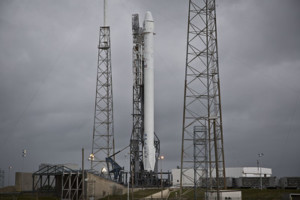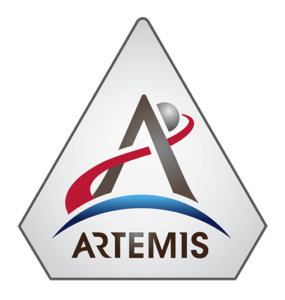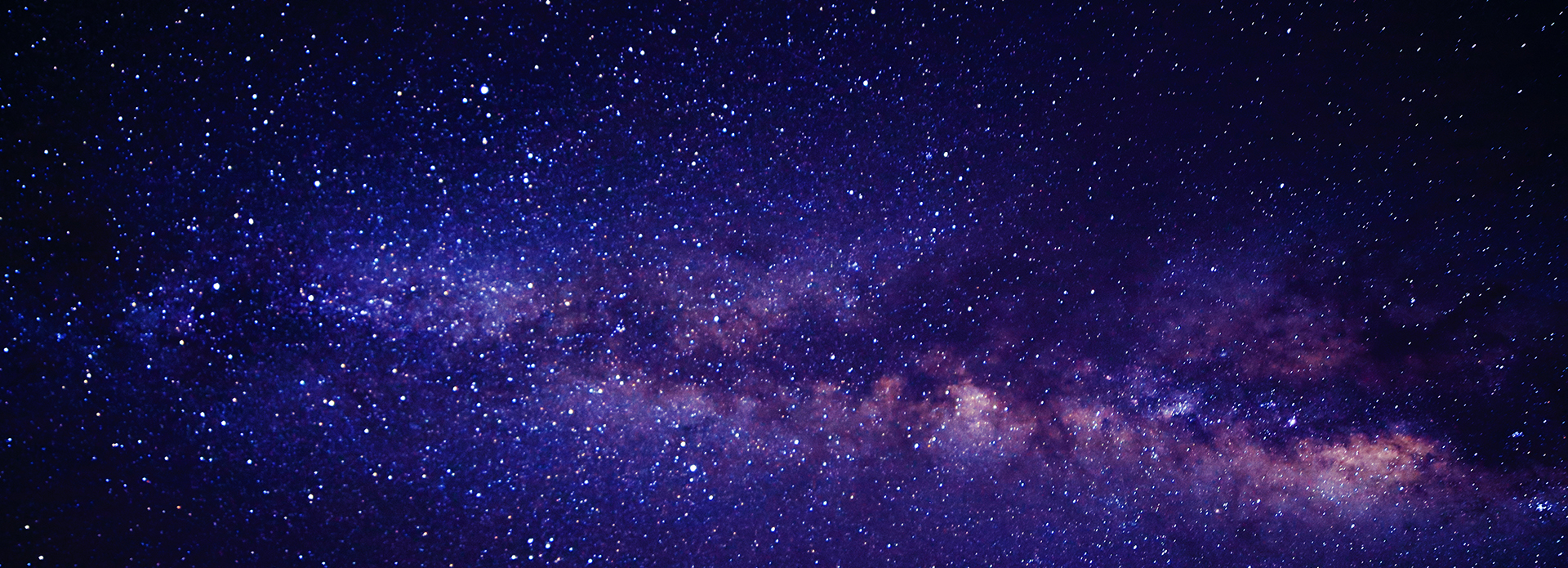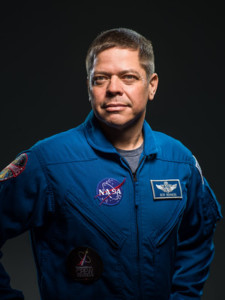It all started with a dream. Not the dream of one, but the dream of millions of humans over centuries of scientific curiosity. It was that dream that led to the Apollo Program and the historic Apollo 11 flight which landed humans on the moon for the first time. Named after the Greek god of the sun, archery, and prophecy, the Apollo Program was the result of years of effort and dreams. On July 20th 1969, the Mission Control of NASA erupted into cheers when “The Eagle has landed” was announced. That moment inspired the dreams of thousands as we launched human spaceflight forward with “One small step for man, one giant step for mankind.”
One such dream was that of Elon Musk, SpaceX founder. Born in South Africa in 1971, he was born into the first era of human spaceflight. His ambition brought him to the United States and eventually to the founding of SpaceX. When choosing the name for his first spacecraft, he went with another mythical figure, Puff the Magic Dragon. A nod to the many people who told him his dream was impossible, Musk named the spacecraft Dragon.
On May 27, millions watched via livestream, Twitter feed, and television screen as the United States prepared to launch SpaceX’s Crew Dragon in the first crewed US launch since 2011. A final flight test for SpaceX technology, this event has been branded as a “new era of human spaceflight” (NASA). Unfortunately, due to inclement weather, the event was aborted 17 minutes before launch and rescheduled for May 30th. On that day, NASA astronauts piloted the craft to the International Space Station in order to test the spacecraft’s capabilities. In a tradition dating back to the Apollo missions, the two astronauts piloting the spacecraft were given the honor of naming it, officially christening the Crew Dragon space capsule the Endeavour.
— VISIT: The International Space Station via Google Earth —
2011-2020: Nine Years of Innovation and Upgrades
In 2011, the space shuttles that had served NASA for over 30 years were retired in order to make room for new spacecraft. Each of the four, Endeavor, Discovery, Enterprise, and Atlantis, were moved to a museum setting to document the history of spaceflight in the United States. Since then, NASA has been quietly partnering with different organizations to roll out new spacecraft that will take the place of the space shuttle fleet. SpaceX’s system has been in development for several years and their spacecraft is ready to go.

The Falcon 9 rocket and Dragon spacecraft prepare for launch for a resupply mission to the ISS on April 18, 2014.
But what is special about this spacecraft in particular? Well for one, the Falcon 9 rocket used to propel Dragon is the first orbital-class rocket that can be reused (Falcon). In the past propulsion rockets were designed to burn up in the atmosphere upon reentry. The Falcon 9 has been designed to withstand the process, making it both economically sustainable and environmentally friendly. The rocket has been tested in uncrewed launches, reentering Earth’s atmosphere and landing on a drone ship at sea (Falcon).
Second, the Dragon spacecraft also has launch escape technology (Dragon). Tested successfully for the first time in 2015, the launch abort system allows the astronauts inside to escape in case of emergencies. This new capability allows for safer launches and reentries. If necessary, the astronauts can initiate an abort sequence which removes the Dragon from the rocket and pilots it to a safe distance away.
— READ MORE: Remembering the Past, Memorializing the Fallen
Third, not only was this the first US launch since 2011, it is also the first commercially built American rocket to ever carry humans to the International Space Station (Rocket). NASA’s Commercial Crew Program has been working with various companies on cost-effective and safe transportation methods.
Once the mission is completed, the SpaceX system will be validated and ready for operation. (SpaceX). Boasting autonomous docking capabilities and in-flight launch escape capabilities, this new system is considered the safest and most efficient spacecraft yet.
Introducing the Crew
The two astronauts chosen for this final test flight Robert Behnken and Douglas Hurley, have been integral parts of the SpaceX design process. Both Behnken and Hurley are experienced astronauts, together boasting nearly 1400 hours in space and 11 spacewalks (Behnken) (Hurley).
Their work on the SpaceX system and their 40 years of experience as NASA astronauts made them natural candidates for this historic mission. Behnken has served both as Chief Astronaut and the Chief of the Space Station Operations Branch (Behnken), while Hurley serves as the Assistant Director
for the Commercial Crew Program (Hurley). Both part of the NASA class of 2000, they’ve worked together for years.
— READ: So you want to be an astronaut? Here’s what it takes. —-
But Behnken and Hurley aren’t just incredible scientists with a love for space. They’re also both family men, with children and wives watching them fulfill their dreams of testing a new spacecraft. During the pre-launch coverage, Behnken expressed his appreciation for his family and the opportunities he has had to chase his dreams. He also mentioned that this was the first time his son would be able to see him launch. In a video tweeted out by Johnson Space Center, Hurley discussed how fortunate he felt to be able to undertake this mission with one of his closest friends. He described Behnken as someone who is “competent, as smart, dependable” in every interaction they have. Along with a sparkly apatosaurus figurine named Tremor, lovingly chosen to accompany the men by the children of Hurley and Behnken, the two friends will jam to alternative rock music from the 70’s as they complete their mission.
What’s next?
Now that NASA has successfully launched the Dragon, what’s next on the horizon?
The commercial partnership between NASA and SpaceX was designed to open up aerospace jobs to a wider population, while stimulating economic growth and development (CCP). Jim Bridenstine, Administrator of NASA, announced during the pre-launch coverage that the new systems are designed to be sustainable, both economically and environmentally. This commercial partnership allows NASA to look toward the future with confidence.
By partnering with public partners, NASA hopes to develop a wide range of viable systems for low-orbit space travel (CCP2). The three chosen companies, Boeing, the Sierra Nevada Corporation, and the Space Systems and Space Exploration Technologies (SpaceX), have been working for years on innovative transportation systems to help usher in this new era (CCP). Started in 2002, SpaceX has spent the last 18 years developing technologies and systems designed to work well and look good. The details were meticulously worked out, with custom made suits for each astronaut.
— Book your trip: What does this mean for human space travel? —-
The most recent Astronaut Selection Program application period has just ended, and NASA has their work cut out for them narrowing down the more than 12,000 applications into a new class of astronaut candidates (Application). This gives NASA an opportunity to select a diverse group of candidates with varied backgrounds and passions. While the new astronauts won’t be announced until 2021, the 2017 class is gearing up for some of their first missions.
— READ: Astronauts to Watch —-

This is the logo of the Artemis program, designed to represent the arrowhead of the goddess Artemis, with a red streak going past the moon and into further exploration.
That class will have some big projects to look forward to, including the Artemis program, NASA’s major effort towards landing another man and the first woman on the moon by 2024.
That moon landing will be the precursor to NASA’s most ambitious project yet–human space travel to Mars. While that project is still years off, every new discovery is one step closer to landing humans on Mars. These projects would not be possible were it not for the combined efforts of hundreds of men and women working together to create technological improvements and promote scientific curiosity.
Jim Bridenstine said it best during the launch. “This is all about the next generation.” NASA’s Commercial Crew Program is not an ending but a beginning to a future in which commercial space travel is commonplace and humans are exploring further than ever before. Elon Musk, SpaceX founder, touched on this as well. During the pre-launch coverage, he explained that one of his goals was “reigniting the dream of space.” That goal is well on its way. NASA has offered two recent competitions to name spacecraft designed for the coming Mars missions. One high school student and one middle schooler were chosen to name the new robots, proving that interest in spaceflight is alive and well among the youth of America. The new Mars Helicopter has been named Ingenuity, and the new Mars Rover has been named Perseverance. Fitting names, as both qualities are necessary for spaceflight! Children dreaming of space today will be the ones taking us farther than we could imagine possible.
Want to Learn More?
Launch America
> Launch America — May 27, 2020 Launch Attempt
> Tour From Space: Inside SpaceX Crew Dragon Spacecraft
Commercial Crew
> NASA to Provide Coverage of SpaceX Commercial Crew Test Flight
> Commercial Crew Information sheet
> Commercial Crew Program — Essentials
Astronauts
> Astronaut Robert Behnken Biography
> Astronaut Douglas Hurley Biography
> Get to Know SpaceX Crew Dragon
SpaceX
> SpaceX’s Rocket Reusability A Key Feature
> Crew Dragon Completes Test of Abort System
> Learn About the Crew’s Capsule, Endeavor
Artemis Program
Astronaut Selection
NASA History
> Elon Musk, From an Idea to History
NASA Future
> Student Names NASA’s Mars Helicopter
About the Author:




Leave A Comment